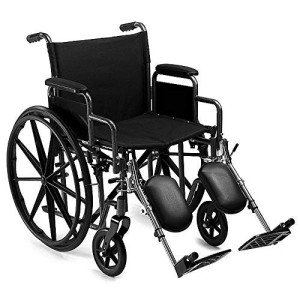12 Facts About Wheelchair Bariatric Transit 24 Inch To Make You Think Smarter About Other People

Bariatric Transit 24 Inch Wheelchair
A bariatric wheelchair is ideal if you require a chair with a bigger seat width and greater weight capacity. This long lasting wheelchair has a nylon padded seat that extends 24 inches large with swing-away footrests. bariatric wheelchair 400 lb capacity has considerable 4 caster mobility and attendant locks for safe stops. The sturdy slide tube frame can support up to 450 pounds.
Weight Capacity
When choosing a wheelchair on your own or for an enjoyed one, it is essential to consider the weight capacity. Basic wheelchairs can accommodate as much as 250 pounds, however bariatric chairs have the ability to support up to 700 pounds. This difference in capacity is the main factor that bariatric wheelchairs are sturdier and much heavier than standard models.
To assist chauffeurs securely transport travelers who use bariatric wheelchairs, it is necessary to have vehicles equipped with proper equipment. This includes wheelchair lifts and ramps that can deal with the increased size and weight of the chair. In addition, chauffeurs should get training on how to navigate these large mobility aids.
The Medline folding extra wide bariatric transport wheelchair has a large 24" seat and a carbon steel frame with rust- and chip-resistant chrome plating. It likewise includes easy-to-clean vinyl upholstery and swing-away footrests with a push-button adjustable height feature. This sturdy wheelchair has a weight capacity of 500 pounds.
When picking a wheelchair, it is essential to request recommendations from a doctor or mobility specialist. They can examine your physical condition and suggest the finest mobility service for you. They can also assist you determine if Medicare or private insurance coverage covers the cost of your wheelchair.

Wheelchair Frame
A wheelchair frame is the main support group that holds the other components of the chair. The frames are made from a variety of materials, consisting of aluminum, titanium, and carbon fibre. Rigid manual wheelchairs are designed with efficiency in mind and utilize the concepts of sports bicycle frames-- triangles are one of the greatest shapes offered and engineers have actually used this knowledge to design frames that produce a stiff system that uses less energy for propulsion than more versatile frames.
The choice of wheelchair frame is frequently based on the requirements and concerns of the client as evaluated by their OT/PT or other clinician. For instance, a front frame angle is an essential setup as it impacts how well the client can transfer or self-catheterize. Similarly the seat to footplate height is an essential factor for positioning and balance.
Many wheelchairs have the choice to be set up with a repaired or reclining frame. For those who need a more stable chair for stability or for transport in lorries, a fixed frame is best. This is particularly true for those who need a bariatric chair with a wider seat width or higher weight capacity.
Folding frames have a conventional "cross-brace" or X design that enables the chair to fold by bringing the side rails together, although there are other styles offered for folding chairs, such as a scissor brace frame (Kuschall Champion) which reduces the variety of moving parts and therefore can be lighter than the cross-brace designs. Other choices for folding frames consist of swing-away legrests and detachable arms.
Numerous manufacturers likewise use a range of choices for the wheelchair frame front end, such as the frame angle. bariatric wheelchair 400 lb capacity at a natural position for pressing, while a 75 degree frame angle positions the feet more forward. The option of frame angle ought to be carefully considered as the more forward position may make it tough for the wheelchair user to get over obstacles or may trigger a wheel catching on dropped curbs and creating vibration.
Rigid frames are generally made from aluminium, although some designs have a double tube building and construction that is comparable to the sport frames used in biking, to assist increase strength and stability. Carbon Fibre is another material utilized in the frame building and construction of some wheelchairs, using an even stiffer and lighter frame.
